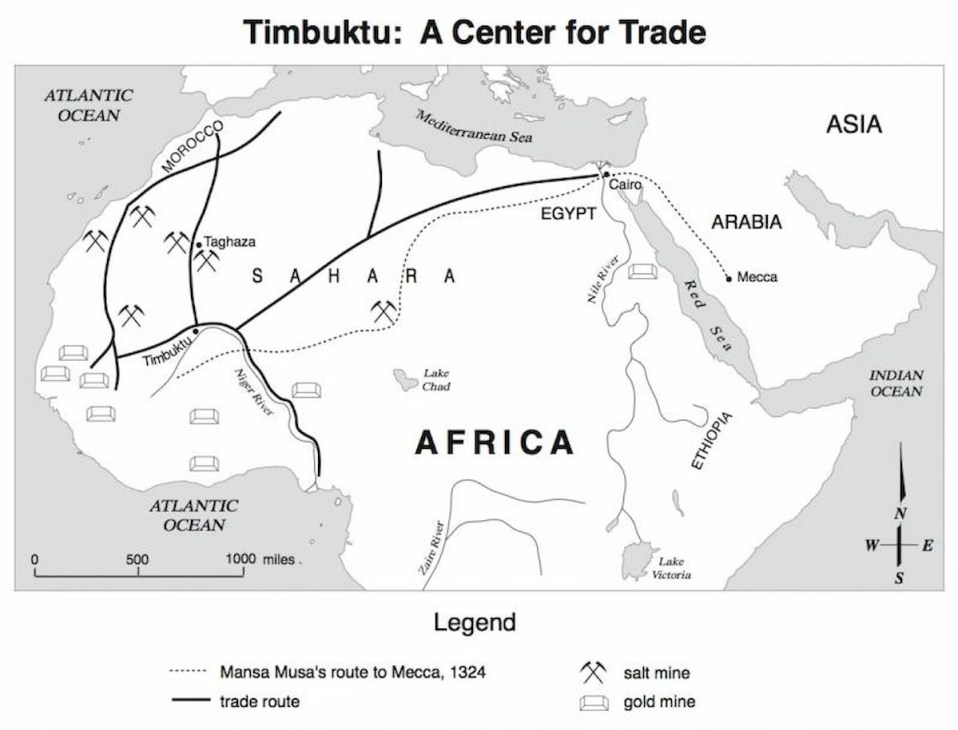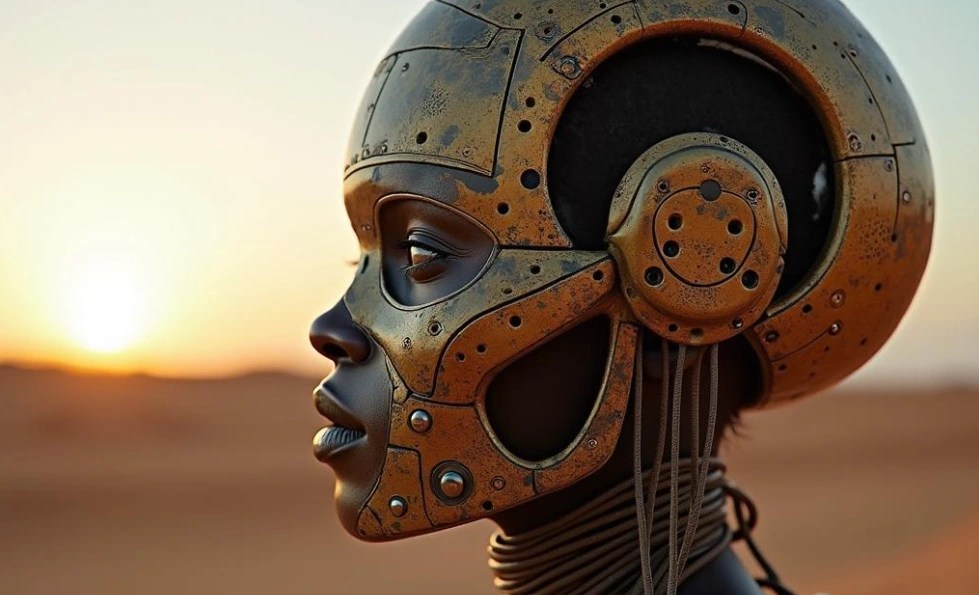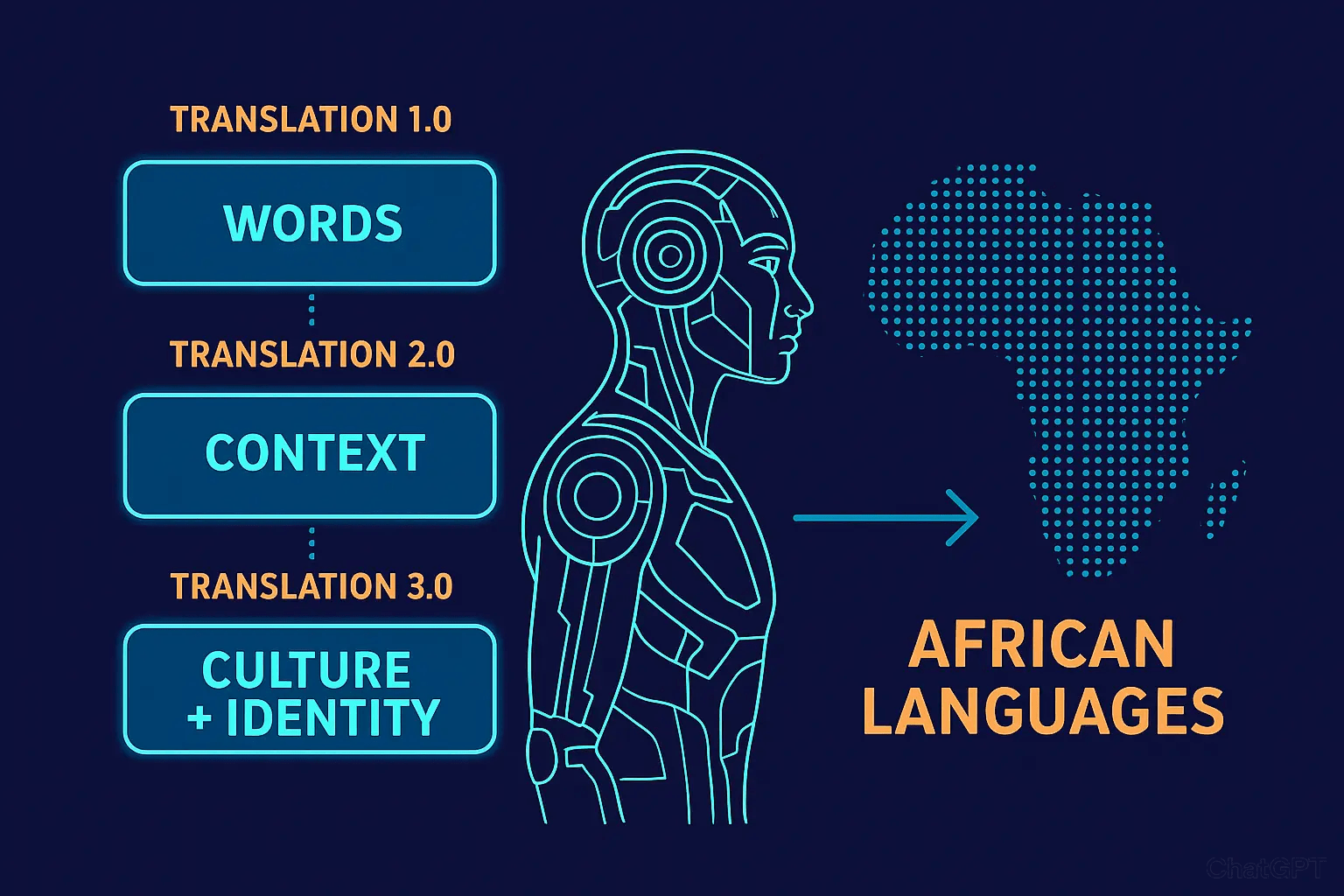Africa and the Future of Translation: From Griots to AI

Africa didn’t wait for Google Translate. Long before Silicon Valley coded its first dictionary app, the continent was already fluent in the art of meaning. From Swahili ports to Timbuktu courts, translation wasn’t decoration; it was survival, trade, and power.
Now it’s 2025. The world talks about “translation trends” in AI, YouTube captions, and Netflix dubs. But Africa has been here before. Translation on this continent has always been more than swapping words; it’s carried identity, humor, and memory.
This isn’t your usual “translation guide.” It’s a journey: from griot storytelling to TikTok subtitles, from colonial silencing to digital revival. And if you’ve ever laughed at a bad auto-caption or wondered how languages shape the future, buckle up. Africa’s translation story isn’t just history; it’s the blueprint for tomorrow.
Africa: The Continent That Translated Before Google Did

Eight centuries ago on the Swahili coast, the harbor was a chorus of languages. Dhows from Oman, Persia, India, and China unloaded more than porcelain and spices; they carried entire vocabularies. Trade flowed not through coin alone but through translators; men and women stitching meaning across tongues with the precision of master tailors.
Translation wasn’t an accessory; it was currency. Without it, caravans stalled and deals collapsed. Swahili itself stands as proof, a language born at the water’s edge, woven from Bantu roots, Arabic rhythms, and Indian loanwords. It wasn’t waiting for maps or colonial borders; it grew because people had to talk. In its own way, it was the Wi-Fi of the Indian Ocean.
And translation’s role stretched far beyond markets. Across the kingdoms of Mali, Songhai, and Kanem-Bornu, interpreters carried the fragile weight of diplomacy. A misplaced phrase could start a war. A carefully chosen one could marry kingdoms. In their voices, empires rose or fractured.
Yet some of the most profound translators never set foot in a royal court. Griots, the oral historians of West Africa, translated history into memory. A battle became a song, a king’s shame turned into a proverb, and a migration lived on as myth. That was translation in its purest form: turning chaos into meaning that people could carry.
As we move forward, here’s the twist: while Africa thrived on translation, it would soon be forced to wrestle with a brutal version of it under colonialism. And that’s where the story gets complicated…
Lost in Translation? How Colonial Rule Rewired Africa’s Languages
Translation has always been about power. The one who translates doesn’t just pass meaning along; they decide which meaning survives. And when colonial powers marched into Africa, they didn’t just bring guns and flags. They brought translators, men who stood at the threshold of empires and made sure only one voice carried authority.
Take the Berlin Conference of 1884–85, when Europe carved Africa into pieces like a pie nobody asked for. Almost none of the African leaders were in the room. The deals, the signatures, the promises? They were translated to Africans, not with them. And we know this truth: the side that controls translation controls the story.
The Silencing of Tongues
Missionaries and administrators often decided which languages deserved written alphabets, dictionaries, or Bible translations. Some, like Swahili or Hausa, were considered “useful” because they facilitated the spread of colonial administration or religion.
Others, thousands of smaller tongues, were dismissed as “tribal” and unworthy of preservation. Imagine your grandmother’s lullabies, your father’s proverbs, your entire oral library, all deemed irrelevant because they didn’t fit a European page.
The Ghosts of Ge’ez and Ajami
And yet, Africa resisted. In Ethiopia, the ancient liturgical language Ge’ez anchored a cultural pride that no empire could erase. Across West Africa, Ajami scripts (African languages written in Arabic script) flourished in marketplaces and mosques, preserving poetry, law, and history.
These weren’t translations for colonial approval; they were translations for continuity. They whispered: We’re still here.

Translation as Resistance
Translation also became rebellion. African leaders and writers like Ngũgĩ wa Thiong’o reclaimed their mother tongues, proving translation could liberate as much as it oppressed. Colonialism revealed translation as both weapon and shield, a tension Africa still carries.
Because here’s the paradox: while colonialism tried to silence languages, Africa remained the most multilingual continent on Earth. And now, in the digital era, those languages are refusing to stay quiet.
Translation Trends 2025: What Africa Can Teach the Future
The world today is obsessed with translation. Every app promises instant voice-to-text, AI-powered subtitles, or earbuds that whisper real-time meaning into your ear like a digital genie. But here’s the plot twist: while Silicon Valley pats itself on the back for “inventing” seamless multilingual communication, Africa has been living this reality for centuries.
Africa as the Original Multilingual Hub
On an average day in Lagos, Nairobi, or Addis Ababa, a single conversation might dance across three or four languages without anyone blinking. A shopkeeper explains prices in Swahili, cracks a joke in Sheng, throws in an English phrase for emphasis, and switches to their mother tongue when a neighbor drops by. What Google Translate calls a “feature,” Africa calls Tuesday morning.
This lived multilingualism makes Africa the perfect teacher for the future of translation. Because translation in Africa has never been about word-for-word equivalence; it’s about meaning, context, and vibe. You don’t just translate the sentence; you translate the soul.
2025 and the Rise of Context-Aware Translation
This is exactly where translation is heading in 2025. The hot trend isn’t just about AI spitting out dictionary-accurate words. It’s about context-aware translation tools that can pick up tone, intention, and even cultural nuance. The machine that knows whether your “fine” means “fine, thanks” or “don’t ask me again.”
AI, TikTok, and the New Oral Tradition
Here’s the playful twist: Africa’s oral storytelling isn’t just alive, it’s trending. Scroll through TikTok and you’ll find African creators translating dance, jokes, and folk wisdom into short clips subtitled for the world. Translation is no longer confined to books or boardrooms; it’s happening in memes, reels, and livestreams. In 2025, the line between translator and influencer is blurring.
And yet, Africa’s influence here is subtle but seismic. Because the rhythm of African storytelling, its pauses, repetitions, and metaphors, challenges AI to go beyond words into performance. A proverb doesn’t land if you don’t nail the pause before the punchline. And that’s something no algorithm can quite pin down. Not yet.

Why Translation Trends Are Looking to Africa
The translation trends of 2025, multilingual AI, live subtitling, and cultural nuance recognition aren’t just cool gadgets. They are echoes of how Africa has always translated. Global translation is catching up to an African truth: meaning isn’t in the dictionary; it’s in the lived experience.
And that’s the lesson. If translation’s future is about building bridges across difference, then Africa has already been laying those bridges brick by brick, proverb by proverb, for generations.
The Future of Translation: Beyond Words, Toward Worlds
Translation has always been treated like plumbing: essential, but invisible. You only notice it when it leaks. But in 2025, translation is stepping into the spotlight, no longer just about fixing communication but about shaping culture, tech, and business. And Africa, again, is holding a quiet but powerful mirror to where this industry is headed.
From Dictionaries to Neural Nets
The old model of translation was straightforward: one word in, one word out. But the future isn’t linear, it’s neural. Large language models are learning not just vocabulary, but cultural references, humor, and even sarcasm. This shift is less about getting the sentence “right” and more about getting the moment right.
Take a South African ad campaign that once flopped internationally because “Now Now”, a local phrase meaning “soon, but not immediately”, was translated simply as “Now.” The literal translation misfired; the contextual one could have saved millions. Tomorrow’s translation tech is designed to catch these nuances.
Africa’s Multilingual AI Opportunity
Here’s where Africa isn’t just a consumer, but a contributor. With over 2,000 languages, Africa serves as a living laboratory for training AI in complexity. Companies like Masakhane (a grassroots NLP research community across Africa) are already teaching machines to think in Yoruba, Amharic, Zulu, and beyond.
These aren’t “niche” languages; they’re the pressure test for AI’s ability to deal with human complexity at scale.
By 2030, the most robust translation platforms will not be the ones that handled French or Mandarin best. They’ll be the ones that survived Swahili’s flexible syntax and Wolof’s layered politeness codes. Africa is not the periphery of the translation industry; it’s the proving ground.

The Economics of Translation in 2025
Let’s not forget the business. Translation is a $60+ billion global industry, and the real growth isn’t happening in Paris or New York; it’s happening in Lagos, Nairobi, and Johannesburg.
Why? Because global companies are finally realizing that “Africa” isn’t one market, it’s hundreds. Launching a product in Kenya and hoping your South African campaign works there is like dropping an app in Spain and expecting it to succeed in Finland.
In other words, translation is now a market strategy. And if you miss the rhythm, you miss the revenue.
From Accessory to Identity
Finally, translation is evolving from being an accessory to being an identity tool. Think about it: when Netflix subtitles a Nollywood series in multiple languages, it isn’t just “making content accessible.” It’s reshaping how African identity travels globally. The future of translation isn’t about shrinking differences; it’s about letting each culture arrive in its full, colorful vocabulary.
Key Takeaway: The future of translation is less about crossing borders and more about carrying identities across them. And Africa, with its layered, lived translation culture, is already doing tomorrow’s work today.
Translation as a Guide: Navigating Culture, Power, and Technology
Translation is no longer the backstage assistant of globalization; it’s stepping onto center stage. In 2025, it’s the guide, the compass, the GPS that directs businesses, tech platforms, and even governments across the world’s tangled cultural highways. And once again, Africa provides the map.
Translation as Market Intelligence
The translation industry is now a multi-billion-dollar market. According to a recent global translation industry forecast, the market will surpass $65 billion by 2025, but without Africa’s multilingual insights, much of this growth risks being shallow. Companies expanding into Africa often overlook localization, relying on generic campaigns that miss cultural nuance.
For decades, translation was seen as a cost line on a budget sheet. Today, it’s market intelligence. The companies winning in 2025 aren’t the ones who only translate their websites; they’re the ones who understand how a translated slogan lands emotionally in Dakar versus Dar es Salaam. Translation is becoming the first UX test for global expansion.
Think of fintech apps: in West Africa, digital wallet providers discovered that simply translating “PIN” into local languages wasn’t enough. The cultural trust around handling money required language that reassured, invoked community, and respected tradition. Translation wasn’t an add-on; it was the business strategy itself.
The Tech Industry’s Translation Arms Race
AI giants know this. That’s why the translation race is fierce. Google Translate, DeepL, Meta’s SeamlessM4T, they’re not just building tools, they’re building global ecosystems. Whoever nails cultural-context AI translation first isn’t just offering a service; they’re owning the pipelines of meaning.
And here’s the kicker: African languages are the stress test. If a system can navigate tonal shifts in Yoruba or proverbs in Shona, it’s not just “good”; it’s battle-hardened. The future of the translation industry is being shaped by whether these systems can hold the weight of Africa’s linguistic reality.

The Philosophy Behind the Technology
But beyond the revenue charts and neural networks lies a deeper truth: translation isn’t only technical, it’s philosophical. To translate is to decide what matters. Which word is chosen? Also, which meaning survives the jump? And, which nuance is lost? Every act of translation is also an act of power.
Africa reminds us of this daily. Colonial-era translations of African texts often flattened rich spiritual concepts into simplified English or French equivalents, stripping them of depth. Modern translators and technologies face the same question: do we reduce complexity for “ease,” or do we expand meaning for truth?
The philosophical angle matters because tech without it risks becoming tone-deaf. A machine can spit out words, but without philosophy, it can’t respect identities. The translation industry of the future must blend both: engineering precision and cultural humility.
Key Takeaway: Translation is no longer a service. It’s a global guide for business expansion, tech innovation, and cultural respect. Ignore it, and you’re lost. Get it right, and you don’t just cross borders; you carry entire worlds across them.
The Future Already Speaks Here
If you zoom out, translation is not about machines, markets, or even words. It’s about connection. And in that, Africa has always been ahead.
Long before AI tried to learn “context,” African proverbs taught that meaning is layered. Additionally, long before Netflix subtitled Nollywood, griots carried histories across villages. Long before Silicon Valley spoke of “translation trends 2025,” Africa was already translating memory into survival.
The future of translation, with its neural nets and real-time captions, is exciting. But it’s also humbling. Because all of it is trying to catch up to what Africa has always known: translation isn’t about flattening difference. It’s about honoring it.
So, the next time you laugh at a mistranslated meme or switch languages mid-WhatsApp chat, remember: Africa has been shaping this future for centuries. The future of translation isn’t just arriving. It’s already speaking, in Swahili, Amharic, Hausa, Wolof, and thousands more. And the world is finally ready to listen!
Translation is moving from being invisible to being inevitable, and Africa’s legacy ensures it will not just be about words, but about worlds. The future already speaks, and it speaks in many African tongues.
FAQs
Will AI replace human translators by 2025?
No. AI can process words at lightning speed, but it can’t capture humor, metaphor, or cultural nuance. Think of it as a power tool, fast and efficient, but the craft still belongs to humans. The real future is human + AI, combining speed with authenticity to keep meaning alive.
Which African languages are most in demand for translation?
Swahili, Hausa, Zulu, Yoruba, and Amharic lead in business, tech, and e-learning. Ajami scripts, Tamazight, Shona, and Wolof are rising in academia and culture. Africa’s linguistic richness isn’t niche; it’s the next frontier for global translation and AI development.
How can I start a career in translation in the digital age?
Focus on mastering one high-demand language pair, then build a portfolio, from Nollywood subtitles to app localization. Learn AI-assisted tools like Trados or Memsource, but also master cultural context. Join networks such as Masakhane, ProZ, or Translators Without Borders. In 2025, translators aren’t just wordsmiths; they’re cultural connectors.


